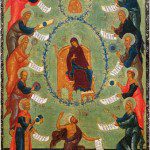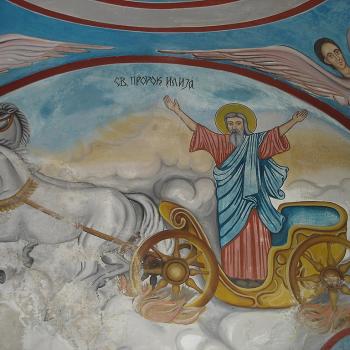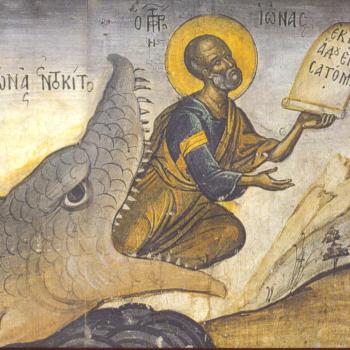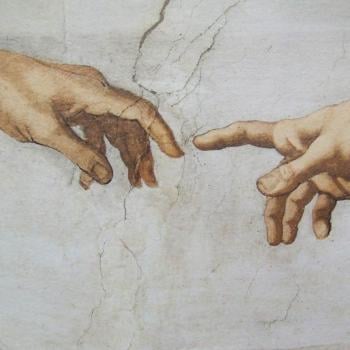J.R.R. Tolkien felt a call in his life to be an artist, a literary artist, who took his linguistic interests and used them to produce a single great work of art which had many different sides to it like a tree with innumerable branches and leaves. For much of his life, he felt that what he had was a private vice, that what he was doing was going to be treated by everyone else as worthless. There was every indication that what he was doing was not what the world thought was great. And yet, his life was devoted to the production of that one great literary work; he knew it was likely he would not be able to finish it, to bring it to the proper conclusion, but he felt each part of that work, if done right, could also be seen as a thing of wonder in itself. He also felt that if he did what conscience and his heart were telling him, and he did it well, putting himself entirely to the task, no matter how little of it could be and would be seen and appreciate by others in the world, it could and would have a place of eternity and will show its worth there.
For Tolkien, being trapped in the vain, empty world, there was the need to be able to see beyond it, to find a way to experience that which lies beyond such vanity. He believed that those who, like him, were attracted to stories, and especially to the magical “fairy story” were seeking and finding a vision of that other reality. Such visions give to those who possess them a way to escape the vanity of the world. Such focus, Tolkien believed, was misunderstood as that of desertion, while it was in reality a way by which the people imprisoned by time could and would experience what lies beyond their imprisonment and give them hope:
Why should a man be scorned, if, finding himself in prison, he tries to get out and go home? Or if, when he cannot do so, he thinks and talks about other topics than jailers and prison-walls? The world outside has not become less real because the prisoner cannot see it. In using Escape in this way the critics have chosen the wrong word, and, what is more, they are confusing, not always by sincere error, the Escape of the Prisoner with the Flight of the Deserter.[1]
Such vision requires us to really understand the world, to be realists. In and through such fantasy, we can be realists in the true sense, because through our imagination we can see things as they are, outside of the appearances they give to us, shackled as they are in time. “For creative Fantasy is founded upon the hard recognition that things are so in the world as it appears under the sun; on a recognition of fact, but not a slavery to it.”[2] The world with its harsh reality can be known, but it is in this way it can also be seen through; its limits which imprison those attached to it and its external form are transcended; it is incapable of overcoming the person with its vanity if they experience a share of the beauty which is to be found in eternity.

To present the truth of this, Tolkien offered his semi-autobiographical allegory, Leaf by Niggle. It is a story about a would-be artist who had a vision of a great piece of art he wanted to produce; he was not necessarily a great artist and he certainly did not have the free time to produce all that he feels inclined to paint. And yet he was an artist and he had a great tree to paint. “Niggle was a painter. Not a very successful one, partly because he had many other things to do.”[3] He was not successful, at least in the earthly scale of things. He was able to start with a great leaf which slowly turned into the tree which he wanted to establish, but he was always being interrupted from his work, and those around him had no clue as to what he wanted to produce:
There was one picture in particular which bothered him. It had begun with a leaf caught in the wind, and it became a tree; and the tree grew, sending out innumerable branches, and thrusting out the most fantastic roots. Strange birds came and settled on the twigs and had to be attended to. Then all round the Tree, and behind it, through the gaps in the leaves and boughs, a country began to open out; and there were glimpses of a forest marching over the land, and of mountains tipped with snow. Niggle lost interest in his other pictures; or else he took them and tacked them on to the edges of his great picture. Soon the canvas became so large that he had to get a ladder; and he ran up and down it, putting in a touch here, and rubbing out a patch there. When people came to call, he seemed polite enough, though he fiddled a little with the pencils on his desk. He listened to what they said, but underneath he was thinking all the time about his big canvas, in the tall shed that had been built for it out in his garden (on a plot where once he had grown potatoes).[4]
Niggle slowly worked with his great masterpiece, just as Tolkien, in his life, would slowly put together his great Middle Earth cycle, some of which appeared while he was alive, but much which has only come to light sense his passing. Tolkien, knowing the work will never end and will be unfinished when he died, also had Niggle die, and leave behind an incomplete work (of which others would find and appreciate a single leaf of his great tree). But it was not the end of the tree or Niggle: in his death, he was to undergo spiritual healing and transformation before being set free to see and encounter his vision come to life; when he did so, he not only glorified in it, we see him wishing that others will have a share of it as well, starting with his old neighbor, Mr. Parrish:
Before him stood the Tree, his Tree, finished. If you could say that of a Tree that was alive, its leaves opening, its branches growing and bending in the wind that Niggle had so often felt or guessed, and had so often failed to catch. He gazed at the Tree, and slowly he lifted his arms and opened them wide.
“It’s a gift!” he said. He was referring to his art, and also to the result; but he was using the word quite literally.
He went on looking at the Tree. All the leaves he had ever laboured at were there, as he had imagined them rather than as he had made them; and there were others that had only budded in his mind, and many that might have budded, if only. he had had time. Nothing was written on them, they were just exquisite leaves, yet they were dated as clear as a calendar. Some of the most beautiful-and the most characteristic, the most perfect examples of the Niggle style-were seen to have been produced in collaboration with Mr. Parish: there was no other way of putting it.[5]
Niggle would get his wish. Mr. Parish would get to see the work in its glory and marvel in it, even as Niggle would begin to see greatness in the work of Parish, greatness which he had not seen before. Together, they would take what was given to them as a gift and work even more with it, making it even greater than they could have ever imagined What Niggle did gladdened Parrish, and yet what Parrish had to offer would surprise and gladden Niggle. What they were able to do together was greater than what they did individually, and yet came from their own initial calling and gifts. In this sense, Tolkien was able to show how the communion of the saints works, where we work together in love and what is produced in our synergy is greater than anything we can do by ourselves. But it must all be done with the calling God gave to us, so that it can be done for his glory; when what we do is touched by grace, then what we produce will be that much greater, with a reward that transcends what we can now comprehend.
Thus, as Pricilla Tolkien indicated, J.R.R. Tolkien was able to establish a spiritual vision, exploring his faith while giving an apology for his own work and how it related to his hope of eternal glory. But key to all of this is that the work has to be worked with God, in cooperation with God, and given grace by God to make it come alive. “So in the space of twenty pages we have a miniature spiritual odyssey where I believe it is clear that my father expounds his Christian belief that without our lives being seen as a journey to God our artistic or other talents will come to nothing.”[6]
While Tolkien would find, to his surprise, success with his work, and find it helped bring release from the vanity of temporal existence to many more than himself in his lifetime, the message of Leaf by Niggle remains valid. We must follow through with the calling in our heart and do what we can to fulfill it; we must, however, not use it to excuse ourselves from our proper relationship with others. Niggle certainly had his failures, which were shown to him: he had to undergo a kind of purgatory before his eventual reward. But he got his reward and found it was best and most enjoyed shared with others and not held on exclusively to himself. And it was something others could finally see and appreciate the grandeur.
This then, is the lesson for us. We should go and do what we are called to do in the world, in and with charity, in and with the dictates of God upon our heart. Even if we do not find success here and leave behind as it were a mere leaf which indicates our work in this world, we can let God take that leaf and make a great tree with it by his grace, showing us the true worth of our endeavor. We must never give in to despair, even if we think we are failing and what we want to do has no chance of success. The world is vain and to seek after mere success in the worldly sense will leave us nothing. We must follow God, enjoy the beauty he gives us in this life, enjoy the gifts he has given to us, and then be ready for the revelation God desires to show us in his good time.
[1] J.R.R. Tolkien, “On Fairy-Stories” in The Monster & The Critics and Other Esssays. ed. Christopher Tolkien (London, Harper Collins Publishers, 1997), 148.
[2] Ibid.,144.
[3] J.R.R. Tolkien, “Leaf by Niggle” in Poems and Stories (Boston: Houghton Mifflin, 1994), 195.
[4] Ibid., 196.
[5] Ibid., 212.
[6] Priscilla Tolkien, “Leaf by Niggle,” TolkienEstate.com. n.d., Web. 1 Sept. 2016.
Stay in touch! Like A Little Bit of Nothing on Facebook:
A Little Bit of Nothing













